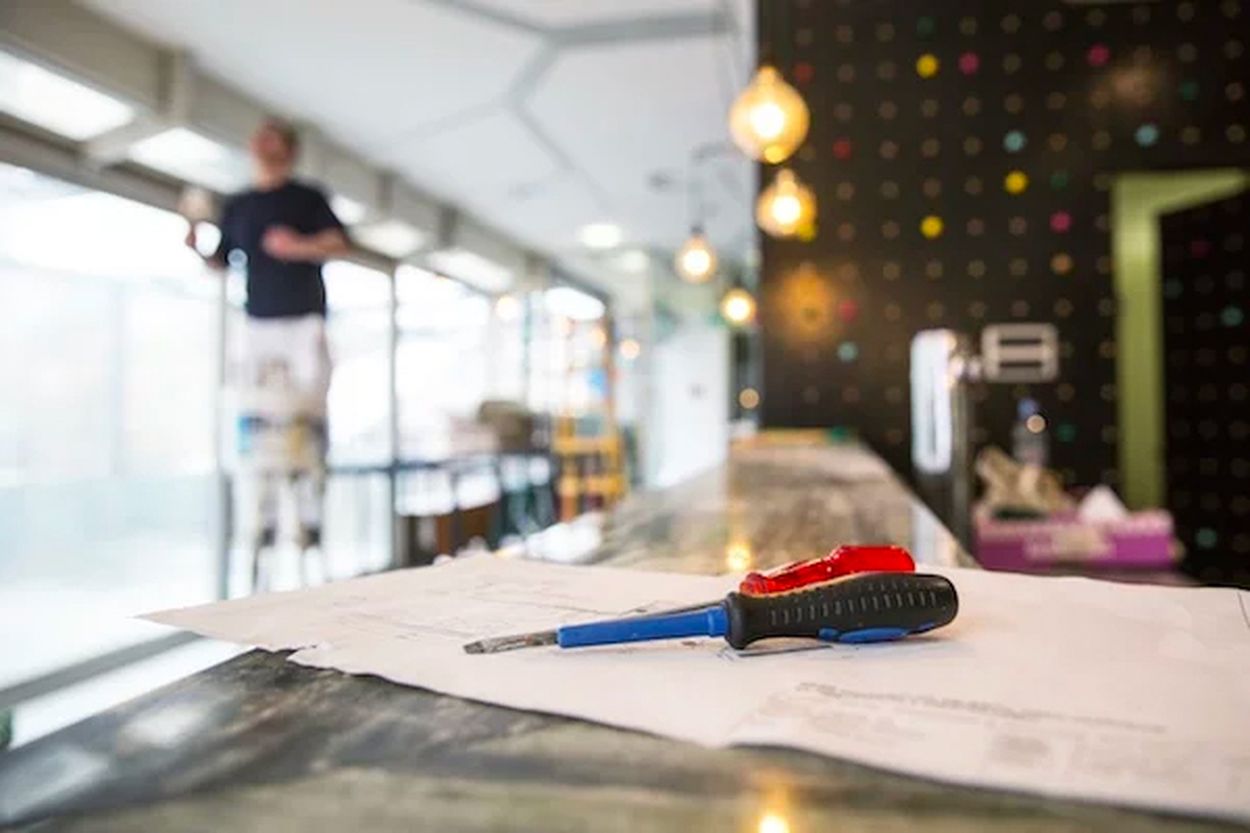
How to bridge the gap between workplace design and culture

“My earliest work experiences shaped my entire outlook on the workplace,” says Chris Good, Creative Director at One Workplace. “I was just a kid, helping my dad with construction work on weekends. The work was hard, but I always learned something. Most importantly we always helped someone who needed it.”

“I knew from that very early experience that I wanted to do something which felt meaningful and purposeful; that it should be related to helping others.” Chris also realized that he was not the kind of person who would do well being in one place, going to the same cubicle every day. “It wasn’t until much later when I started my actual career that I realized how much my then-workplace, and in fact, most people’s workplaces, were so misaligned with that ideal of fostering individual autonomy and purpose,” he says.
What he’s most excited about now is the collective awareness among companies as to the shortcomings of our workplaces. Chris shares, “It’s an amazing and exciting time to be involved in shaping work experiences to create a deeper sense of meaning.” In this interview, he shares more of his philosophy on how workplaces can tell a story, and how to connect culture with your physical working environment.
How can a workplace tell a story?
As Creative Director at One Workplace, Chris is an advocate of the design thinking process as a way to reshape spaces. He’s seen the good, the bad, and the in-between, and says you don’t need to be a designer to spot the difference.
“Perhaps this is because for so long, the majority of workplaces did not approach this storytelling with intention,” he says. We’ve all been in these workplaces. Chris brings to mind the “nondescript shells, packed to the breaking point with workers filed away into their own little boxes.” However, even those spaces tell a story, “It’s a story that says we don't care about our people or their individuality”.
So, we asked Chris, where do the memorable stories come from?
“From the moment you walk inside you get an undeniable sense of the people who truly live and work there. Their heart and soul is on display. That’s what it’s all about - the people,” he says. Design elements like color, architecture, and decor, play a role in the story but what really matters is how people shape and use the space.
Below are questions that Chris asks while trying to uncover a workplace’s story:
- How do people behave while they are in the space? Is it casual or formal?
- What objects do people leave behind?
- Does the space support the way people talk, think, and act, or does it fight it?
- What message did the company intentionally set out to tell? What message was sent in its place?
His best advice for finding your company’s unique voice is to try not to force it. “Your organization probably already has a voice and a great story to tell. Tell that story and be true to it. Show it with all its awesome lumps, bumps, and imperfections, don't sterilize it for the masses,” he says.
Representing culture in the workplace
Chris says that each decision about workplace design has a significant cascading impact on every other decision to follow. “Taking on a project to shape your workspace and ultimately your culture is really difficult work, with long lasting effects. That is why it is so important to have trusted partners who understand your organization to assist and share the burden of getting it right.”
The biggest challenge in Chris’ view is the impact that workplace design can have on culture. This challenge comes from two places - first, culture can be tricky to define and measure, and second, not all organizations are interested in openly discussing it. “We have to be willing to see our organizations for who they are. That self-honesty is needed in order to design the types of authentic change that can move your workplace forward.”
In the end, Chris reiterates that in our agile and flexible world, the workplace exists for only one reason - to be a place where people can come together. “No one should have to come to the office by default anymore. If your workplace does not align, support or improve your organization's culture, then it has failed,” he says.
If you’re looking to represent your company’s culture through workplace design and need a place to get started, consider these five simple steps from Chris.
- In a short statement, describe your desired organizational culture.
- Identify any specific areas within your workplace that support or align well with that vision. Consider entire buildings, individual rooms, or specific work tools and technologies.
- Identify any areas that conflict with that vision.
- Brainstorm with your team to generate ideas that reinforce the successful spaces and reimagine the unsuccessful ones. The challenge is to ensure that all improvements directly relate back to achieving your desired culture statement.
- Reduce the priority of any suggested improvements that do not make an immediate cultural impact.
Physical space, human behavior, and organizational culture
“Physical space shapes our behavior, and when we’re at work those patterns of behavior have a direct impact on the resulting organizational culture,” says Chris. He admits that the phrase, “space shapes behavior” sounds simple, but insists that like many things in life it is deeply complex.
“Our personal biases, desires, habits, and pursuits that we carry with us and each plays their own role in shaping the interpersonal work experience. The trick to making positive improvements is to start with those seemingly unconscious things we do and to find ways to make them intentional and purposeful. Find those little things that move the needle and build on them until you create a wave.” he says. In the end, “Creating great workplaces begins and ends with the quality of the culture within them.”




